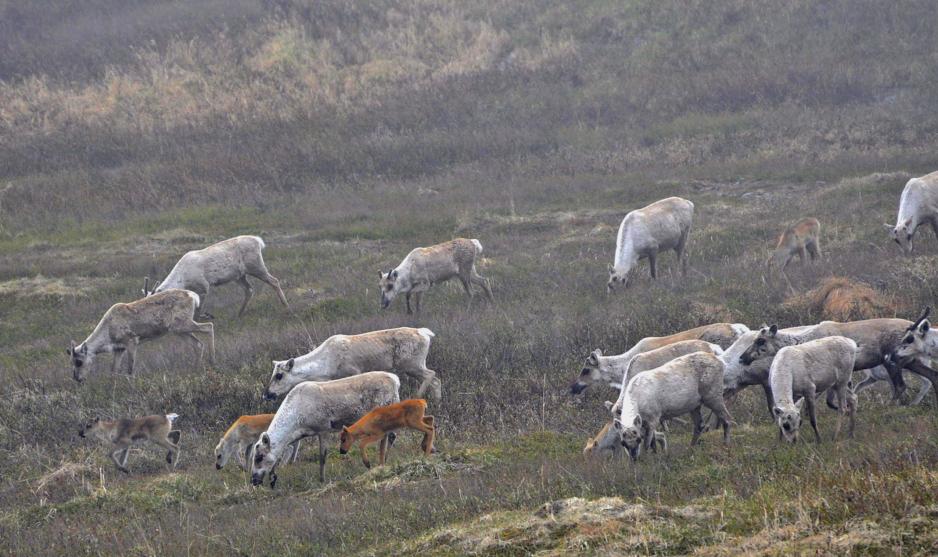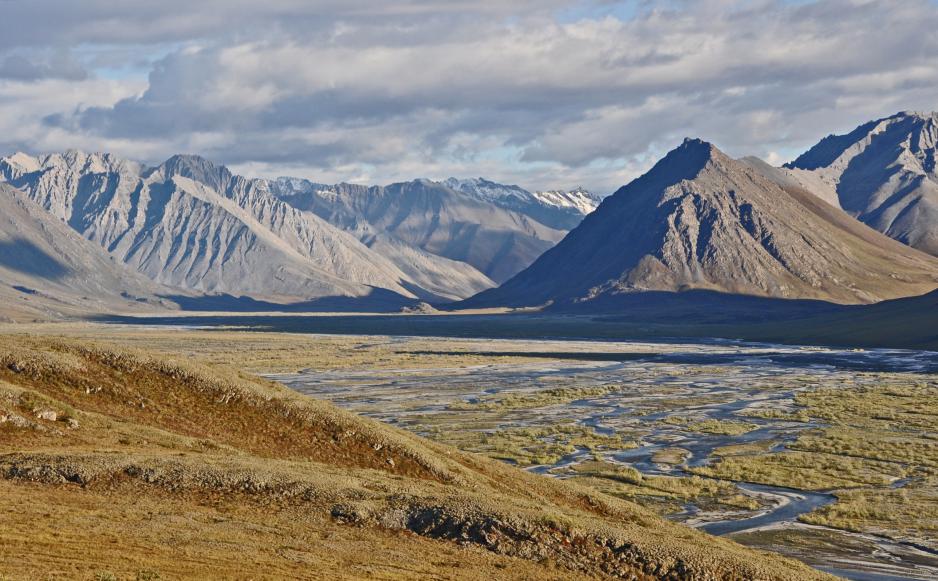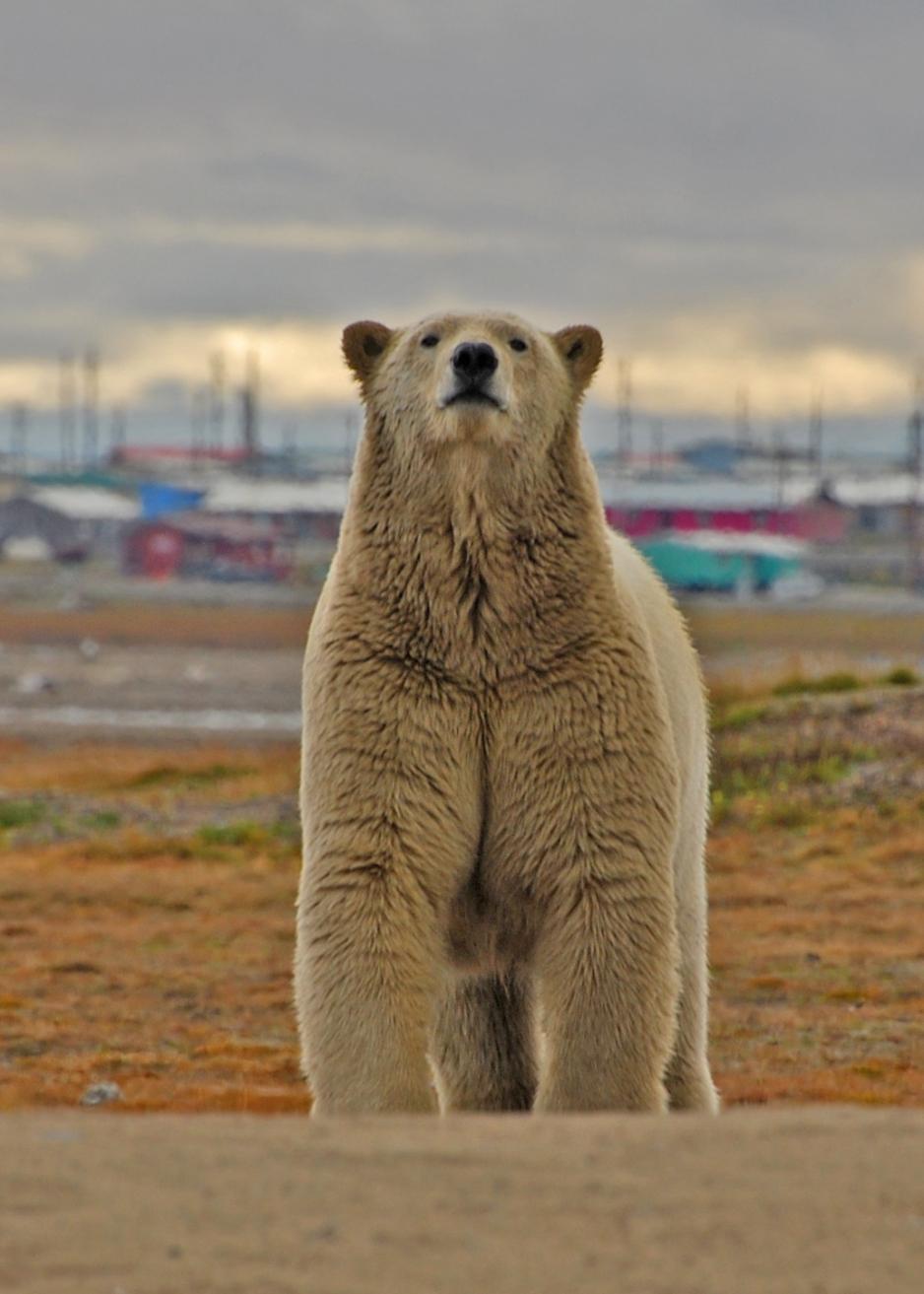Op-ed: Alaska’s Arctic National Wildlife Refuge: The Place Where Life Begins

The long-running debate over whether to open up Alaska’s Arctic National Wildlife Refuge to development is about to resume. Arctic wilderness guide and author Michael Engelhard makes his case for the area’s protection.
The highlight of a two-week backpacking trip in Alaska’s Arctic National Wildlife Refuge (or ANWR), which I guided this summer, was thousands of caribou from the Porcupine herd, which streamed past our camp on two consecutive days. They formed the vanguard of the annual fall migration, during which the herd returns south to congregate near the tree line for the rut.
After dropping their calves in June, the animals had been fattening up on the coastal plain for their 650km (400-mile) return trip in late July. The leaders first alerted us to their presence with old-man grunts. Emerging from our tents, we watched in awe as the brown tide flooded the hillside, pulled by millennia-old urges. Their musk hung heavy in the still air. In some Brooks Range valleys and passes, the earth looks raw, plowed by caribou hooves – 90,000–170,000 ungulates annually engaging in North America’s largest land mammal migration aptly suggest what bison herds on the Great Plains must have been like.
Almost as big as South Carolina, the refuge is the setting for life cycles that essentially unfold as they did at the end of the last ice age, 12,000 years ago. The expanse between the Inupiat village of Kaktovik and the Gwich’in’s Arctic Village 225km (140 miles) due south harbors the greatest wildlife diversity of any protected area in the circumpolar North. Nourished by summer’s constant daylight, hardy vegetation supports unrivaled wildlife concentrations in this part of Alaska’s Arctic: The famous 1002 Area of Alaska’s Arctic coastal plain is the Porcupine caribou herd’s calving ground.

The refuge also is crucial for polar bear survival. It contains the highest concentration of denning sites in Alaska along a 200km (125-mile) stretch, the only segment of the state’s 10,000km (6,200 miles) of northern coastline still closed to drilling. Outside this sanctuary, oil production and seismic exploration often drive female polar bears and their cubs from cozy dens, exposing them to the steel bite of Arctic winter. Any spill – onshore, at pipelines or drill rigs, or offshore, from ships in the now-ice-free Northwest Passage – threatens the food sources of both people and bears.
Silence and solitude only enhance the riches of this incomparable land. Within minutes spent by the shores of one of its gin-clear rivers, the murmur of riffles strips away civilization’s cares. The closest road is the “Haul Road,” unspooling invisibly to the west. Officially known as the Dalton Highway, its washboard surface shadows the pipeline between Fairbanks and Prudhoe Bay. The human touch has been felt in this country for millennia, although lightly. As early as 13,000 years ago, hunters crossed the then-exposed Bering Land Bridge in search of game. Their descendants still depend on caribou as a way of life, for physical and spiritual sustenance.
Data gathered in the past 50 years in the western Arctic show that winter temperatures in this region have increased as much as 4C (7.2F) and snow cover has diminished proportionately. I keep seeing slumped riverbanks where permafrost melted, and tinder-dry tundra, and summit days sometimes aren’t worth the effort because wildfire haze now obscures the view. Many Inupiat and Gwich’in fear that a warming Arctic or renewed attempts to open the refuge to oil and gas drilling might send the Porcupine caribou the way of 19th-century bison.
From its very beginning, under the Eisenhower administration, the refuge sparked political and economic controversy. Of a total of 19 million acres (7.7 million hectares), only 8 million were protected as federally designated wilderness. Congressional authorization is necessary before oil drilling can proceed in the 1002 Area. This refuge was set aside for the animals, but make no mistake: We need it just as badly.

Together with the Grand Canyon (whose watershed is threatened by uranium mining), this is my favorite place in the world. I encountered my first wild polar bear here, 50km (30 miles) from the coast, the farthest inland sighting ever recorded for the refuge. The story of that chance meeting is in “Ice Bear,” the book itself a result of my long obsession with bears and wilderness. Unable to find one that explains our fascination with the White Bear (comparable, say, to Barry Lopez’s “Of Wolves and Men”), I decided to research and write my own. I was not the least bit surprised to learn that this creature magnetized people and cultures across time. I was very surprised how persistent and widespread some beliefs and attitudes regarding this species have been. For the first time, I saw how much the bear has served as a screen onto which we project our fears and desires.
"A few recovered species don’t compensate for the lost company of great beasts," the marine biologist Carl Safina writes. Sadly, he’s right. But here there still are some wildlings, and we in their company, finding a measure of peace in seamless days on the tundra or rivers. Many visitors with whom I speak confess that they want to see this place while there is still time. What we all feel, I’d like to believe, is a mixture of helplessness, guilt and regret rather than morbid, rubbernecking curiosity. Like conscientious criminals, we are drawn to the scene of a crime, witnesses and perpetrators rolled into one, forever haunted by our deeds and sins of omission. Perhaps, in the great beasts’ presence, we are hoping to somehow be forgiven.
Fifteen years ago, one of Alaska’s pro-development politicians raised a blank white poster board on the U.S. senate floor like a modern-day Ahab poised for a strike. “This is what ANWR looks like about nine months of the year,” he said, trying to persuade fellow senators to open the refuge to resource extraction. An opponent to drilling later held up a book with photos of winter scenes and polar bears emerging from dens in the alleged white waste.
Earlier this month, with a new president backing her agenda, that Alaska politician’s daughter, Senator Lisa Murkowski, introduced legislation to open the Arctic National Wildlife Refuge’s coastal plain to drilling – it is her ninth attempt.

Rather insidiously, and regrettably, the prominence of the Arctic Refuge masks the possibility that other, equally rich, places could be degraded without proper notice. With the media’s and public’s attention and conservationists’ efforts focused on northeastern Alaska, the state’s Western Arctic gems, such as Teshekpuk Lake, the Colville River and Utukok Uplands – special areas the BLM manages as part of the National Petroleum Reserve but which lack protection – are still at risk.
I firmly believe there are landscapes that speak to certain individuals more than others do, even to the extent where only one place ever makes a perfect match for such a person. A first exposure to this kind of “soulscape” feels like a homecoming. Fortunately, I have found not one, but two: the Grand Canyon and Arctic Alaska. Unfortunately, lying 4,000km (2,500 miles) apart, they have sentenced me to a lifetime of wandering. I still consider myself lucky, as a wilderness guide of 25 years, to have spent my best days in these two magnificent regions. Like the canyon’s, the coastal plain’s bare look is deceptive. It, too, is truly a place where life begins.
This article were first published in Arctic Deeply. The views expressed belong to the author and do not necessarily reflect the editorial policy of Arctic Deeply. For important news about Arctic geopolitics, economy, and ecology, you can sign up to the Arctic Deeply email list.
